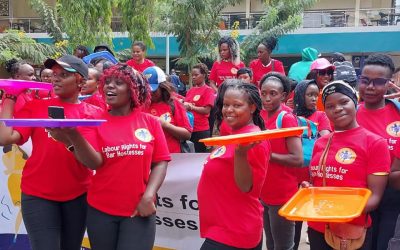ADAPTED FROM AIDSMAP
A recent study published by AIDSMAP and analyzed locally by different research firms from data collected at seven different Sex Workers Outreach Programs in Nairobi from a sample of 33,560 women indicates that the number testing positive for HIV has dropped by more than two-thirds between 2008 and 2017.
While no single intervention can be identified as to the underlying cause in the decreasing numbers, it suggests that increasing HIV awareness, testing and treatment in Kenya are reaching this population of women, despite the criminalization of sex work. It is estimated that female sex workers in Kenya are almost ten times more likely to contract HIV than non-sex workers, so they are a key population to target.
The clinics use peer support and outreach workers to recruit female sex workers. When signing up to use the clinic’s services, each woman was offered an HIV test, which was used to monitor rates of HIV. Further information was collected by analyzing questionnaires that the women were asked to complete when attending. Only 78% of the women completed this information, as it was not mandatory for enrolment into the clinic.
While welcoming this development, Mercy Mutonyi, a Project Manager with Bar Hostess empowerment and support programme (BHESP) an organization that supports the welfare of sex workers in Kenya, more concerted efforts is needed to bring the figures even lower. “ There needs to be more investment in HIV prevention options for female sex workers that meets their preference and needs based on their risks, for example, a street based sex worker would prefer a different prevention option to a brothel based sex worker, explained Ms Mutonyi.
According to the report, the overall percentage of female sex workers who were positive for HIV decreased from 44% in 2008 to 12% in 2017, amounting to a 67% reduction in prevalence after adjustment for known demographic and behavioral factors that could influence the results. In all age groups there was a general trend downwards in most years. Prevalence in the under 25 year olds was used to estimate the number of new infections because previous national surveys suggest that this age group are responsible for the majority of new infections. In the under 25s, positive diagnosis at enrolment increased from 14% to peak at 19% in 2010 but then fell down to 5% by 2017, which could correlate to a decrease in the overall number of new HIV cases.
While commenting on the report, Josephine Achieng, a clinic manager also with Bar Hostess empowerment and support programme (BHESP), attributes this positive change to a shift in the mindset and attitude by the community towards sex workers and sex work related stigma. “Community involvement and strengthening community participation at all levels has gone a long way in providing evidence based interventions towards HIV prevention, care and treatment among sex workers in Kenya, said Ms Achieng. “Stigma related to sex work is slowly declining though we still need to remain cognizant of the many underlying issues that sex workers still face in the community,” she added.
However, the researchers did note some limitations to this study, as it is possible that more sex workers at higher risk of contracting HIV were enrolled earlier in the study, with sex workers at lower risk joining later. This may have occurred because of HIV-positive women seeking out these clinics in earlier years as a means to access treatment or because clinics strived to meet HIV treatment initiation targets in later years. This could account for part of the decrease seen.
While the overall sample size was robust, a large portion of data is also missing from the questionnaires, making the analysis of prevention strategies more limited. Even when using models to adjust for the reported changes in condom use and HIV testing, the lower rates of HIV were not fully accounted for, which suggests that other factors were also involved.
Some potentially important factors to explain the reduced prevalence were suggested by the researchers. The first is the improvement in HIV prevention messaging on a wide scale in Kenya for the entire population. The second factor could be higher rates of viral suppression in potential clients because of an increase in the use of antiretroviral therapy and the ‘treatment as prevention’ strategy. More specifically for female sex workers, the use of peer support to improve messaging to women not involved in clinics may also have contributed to the fall in HIV cases seen.
Given that the lifetime risk of HIV in female sex workers in Nairobi is still high despite these decreasing numbers, the researchers suggest that it is important to continue targeted interventions to further reduce infection rates of HIV.



